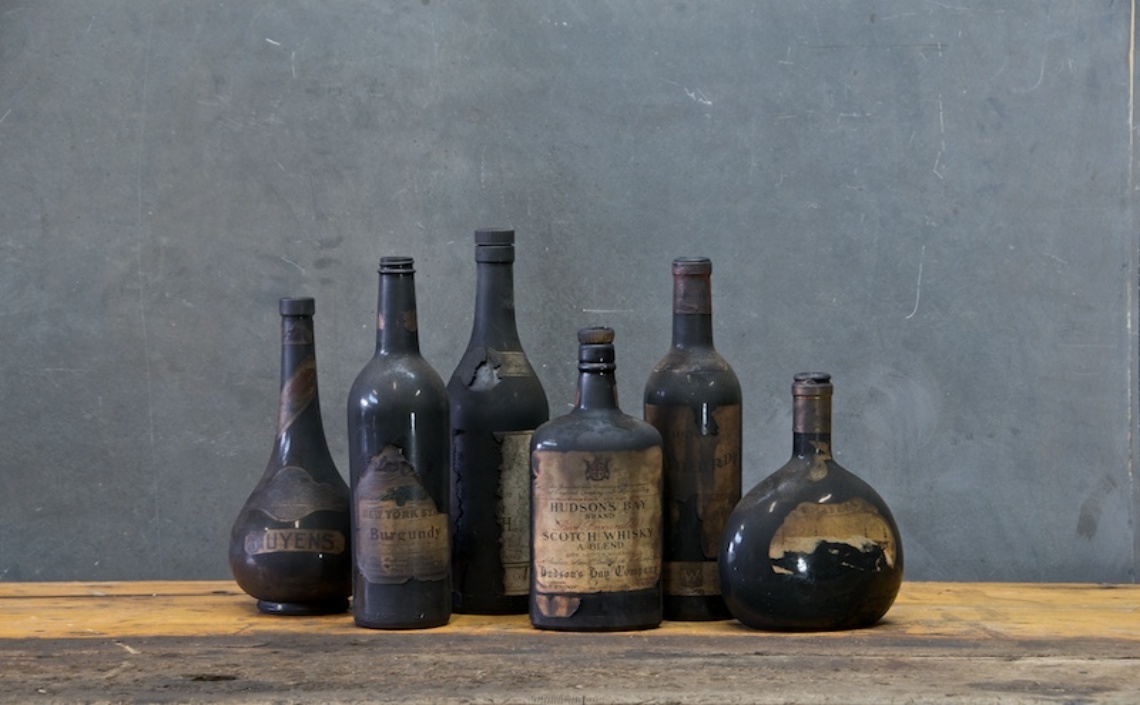
#253
VINTAGE DRINKS
03 Nov 2015 By Xin Hui Helder-Eng
Bartenders are getting their hands on the oldest and rarest booze, dating back to the 1940s. Are you game for a limited edition cocktail?
Vintage glassware has its place, but would you drink an antique cocktail? A growing number of bartenders are getting their hands on old and rare booze, some dating back to the 1950s and earlier, and mixing them into pricey, limited-edition cocktails.
“I don’t feel it’s sacrilegious,” says Travis Brown, bar director at New York City’s Alder, who stirred up drinks like a Martinez made with Plymouth Gin, Martini Rosso sweet vermouth and Stock Maraschino liqueur, all circa 1960s. “It was meant to be consumed, just like a vinyl record was made to be listened to.” It becomes about selling “a little bit of nostalgia.”
One of the prime purveyors of antique booze is Edgar Harden, the founder and director of the London-based Old Spirits Company, previously of Christie’s Auction House. Harden scours estate sales and dark cellars for rare, dusty liquor bottles.
“I have about 3,500 bottles of everything you can imagine,” says Harden. The oldest bottles to cross his path? A 1795 Cognac and an 1800 Madeira.
Sometimes, entire collections come his way. Harden purchased 176 bottles from the prop team of the recently wrapped TV series Mad Men. Some of the bottles were poured at a private party, others sold to eager buyers like Brown at Alder (yes, you can drink Don Draper’s stash).
The vintage cocktail trend has been building momentum for some time. Some bars will offer drink specials made with old bottlings, though they only last as long as the contents do.
The Experimental Cocktail Club in New York City was among the first to put a “Vintage Cocktails” section on its menu, including drinks like the Chet Baker ($150), featuring 1940s Leeds & Wakefield Jamaica Rum.
Jack Rose Dining Saloon in Washington, DC, renowned for its selection of dusties, recently listed a $135 special at its basement speakeasy, Dram & Grain, made with 1950s Cognac and ’60s Green Chartreuse.
Yet, perhaps the most high-end example is the Vintage Brandy Crusta at Canon in Seattle, made with 1870s Cognac, 1930s Cointreau, 1960s Maraschino and 1930s Peychaud’s bitters, selling for a hefty $1,100.
By comparison, Alder’s geriatric drinks sold for a mere $30. But is that $30 vintage Manhattan all that different from a $14 standard version? Brown says, “Yes.” Very old spirits may become slightly oxidized, more viscous or less boozy. Flavors can mellow or become more concentrated to the point that Brown had to tweak recipes to accommodate such changes.
“Spending a couple of decades in a sealed bottle makes a big difference,” he says.
Of course, not all spirits age gracefully. Gin can grow flabby when the juniper notes fade, while badly stored vermouth can become undrinkable, which does no favors to a martini.
In other words, if you find a vintage cocktail you enjoy, it’s best to drink up.
“You might not be able to get it again,” Brown says. “It’s definitely kind of heartbreaking.”
Article was first seen here.

You might be interested in...
SPARKLING WINE COCKTAILS
Our New Year's resolution that we plan to stick to: Drink more sparkling wine.
LIQUOR LEGENDS
They owned the drink in their hand as much as their sense of style, matching a snappy vestiary with a sexy drinking vessel. Here are the Five Legends of Liquor.
CHEERS: WHY EXACTLY DO WE TOAST WITH WINE?
Whether it's cheers, salut or kanpai, the act of toasting is a global phenomenon that has been at the forefront of celebrations and community gatherings for centuries. But the question is: Where exactly did the origins of toasting with wine begin?
SPARKLING WINE COCKTAILS
LIQUOR LEGENDS
CHEERS: WHY EXACTLY DO WE TOAST WITH WINE?